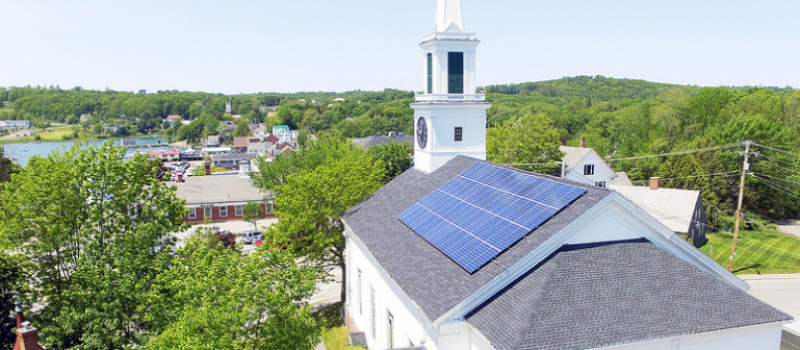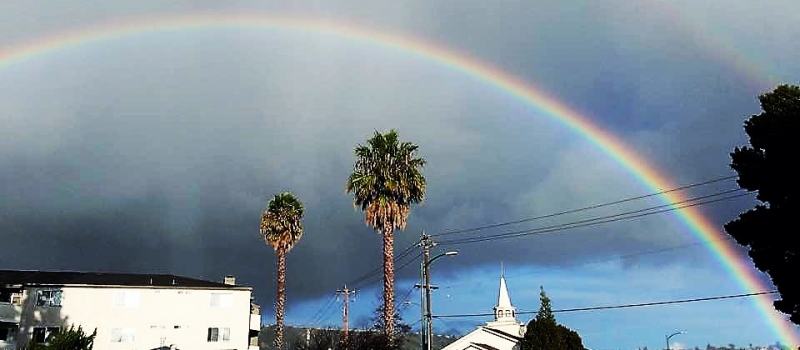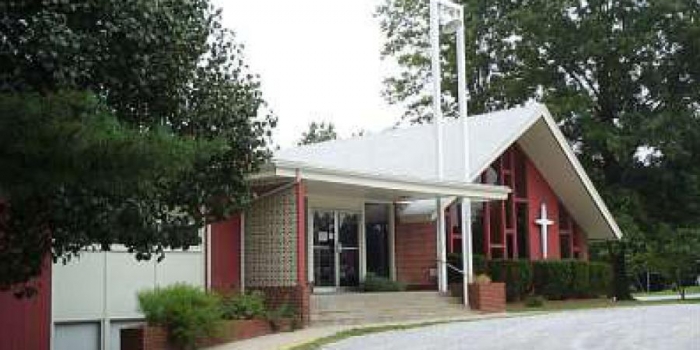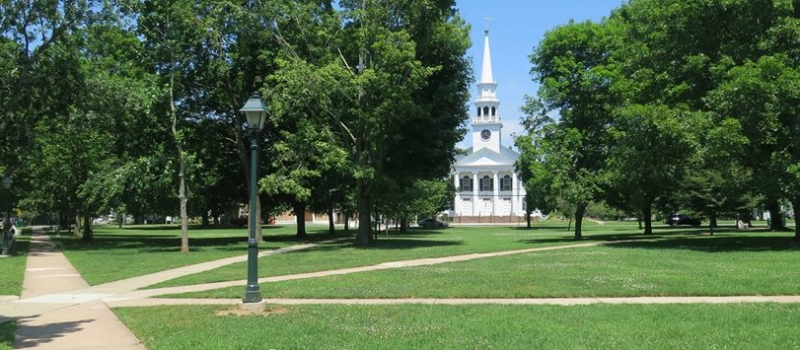Solar Panels for Churches and Houses of Worship
Discover how much you can save today with our solar calculator
Why Houses of Worship Across the Nation Are Putting Their Faith in Solar Panels
From Christianity to Islam, Buddhism to Judaism, the United States certainly has a rich and expansive religious culture. Churches, synagogue, mosques and other houses of worship function as centerpieces of many cities and towns, and they can bring to bear considerable influence in their communities. Increasingly, these congregations are using that influence to spread the word about solar panels and its vital role in protecting the environment we all share. To that end, we’re here to explore the role churches and other houses of worship play in the push for greener, more sustainable energy and to celebrate those who’ve placed their faith in solar panels solutions.

Stewards of Creation
Though accurate numbers are hard to pin down, it’s generally estimated that there are about 350,000 places of worship in the United States at any given time. These churches, temples and mosques may offer a great variety of teachings, but one thread that unites many of them is a belief that humans hold a spiritual obligation to be good stewards of creation. It should be no surprise, then, that these places of worship are turning to solar panels in greater numbers than ever before. In doing so, they do their part to lead by example in reducing their environmental impact.
Churches are also uniquely suited to expand their influence through education and outreach efforts. Because they are so essential to the fabric of their communities, churches and other places of worship have an opportunity to educate their members about the value of solar energy and the potential for good that it holds. Protecting the environment is a major challenge, but with bold and thoughtful leadership, religious communities can play a large and important role in ensuring a cleaner, brighter future for generations to come.
Going Green to Save Some Green
Like other nonprofit organizations, many churches operate on a limited budget. There’s only so much money to go around, and saving money on operating expenses like utility bills means more money can be spent on serving the congregation and doing good in the community. That makes solar energy very appealing, as a moderate initial investment can ultimately pay off with significantly reduced – or even eliminated – energy bills for years to come. In some cases, churches may even be able to save more money by participating in a community solar garden, in which members throughout the community share in both the costs and the benefits of a jointly owned solar installation.
Solar Panels for Houses of Worship
Though it can save some serious cash over the long run, making the leap to solar panels does involve some up-front costs. Unfortunately, because houses of worship are nonprofit entities that don’t have tax bills, they aren’t able to avail themselves of the federal Investment Tax Credit (ITC) that offers individuals and for-profit institutions a tax credit equal to 30 percent of the cost of a new solar installation. That doesn’t mean churches can’t still enjoy savings for going green, but it does mean they need to get creative.
One way in which churches can save on solar panels is through CollectiveSun, which uses a proprietary financing model to help nonprofit groups purchase solar energy systems at a 15 percent discount. Additionally, the Interfaith Power & Light initiative is an organization whose goal is to promote environmental conservation through religious organizations across the country. They offer a variety of educational programs, and their branches in each state work with local churches to manage financing and logistics for solar panel installations and other green energy initiatives.
Churches and temples have long served as drivers of positive change in their communities, and solar energy and other environmental conservation efforts represent a natural continuation of that. Believers of all faiths can play a role in ensuring that we act as good stewards of the planet we share, and the houses of worship that have stepped up and embraced solar panels serve as shining examples of that.
Faith Baptist Church – East Oakland, California

For years now, Faith Baptist Church in East Oakland, California, has worked to serve the most vulnerable people in their community, including feeding more than 300 local families each month. Thanks to a recently installed solar energy system, they expect their campaign of good works to expand even further. The church added a six-kilowatt solar array that it expects will slash its energy costs by half in the first year alone, saving more than $40,000 over the lifetime of the system.
The array’s $18,000 price tag was covered in a single day with the help of crowdfunding efforts led by the nonprofit organization RE-volv, which also partnered with the Leonardo DiCaprio Foundation. RE-volv has helped to secure funding for nearly a dozen similar projects in several states, with more solar installations coming in the near future. As an added bonus, each payment RE-volv receives for its solar projects is then reinvested to help build other solar arrays across the country.
Good Shepherd United Church of Christ – Carbondale, Illinois

Members of the Good Shepherd United Church of Christ in Carbondale, Illinois, have always recognized the importance of protecting and preserving the environment. So much so, in fact, that the church covenant lays out its congregation’s responsibility to serve as good stewards of the Earth by practicing sustainable, responsible habits. In years past, this took the form of recycling programs, waste-reduction initiatives and even promoting vegetarian cooking. Now, it comes in the form of 24 photovoltaic solar cells installed on the north end of the church roof.
Thanks in part to renewable energy initiatives passed by the Illinois state government, Good Shepherd’s 8.28-kilowatt solar panel system will return about 90 percent of its installation costs in just the first year of operation. The church expects to save about $1,100 per year on its electricity costs. It will also reduce its carbon footprint by about 207 tons – a significant step toward fulfilling its environmentalist pledge.
First Congregational Church – Guilford, Connecticut

The First Congregational Church in Guilford, Connecticut, is dedicated to the idea that its members share a sacred responsibility to protect the environment. This is reflected clearly in its establishment of an Environmental Ministry Team, which works to find ways for the church and its members to promote sustainability and environmental stewardship. It’s also reflected in a new, 23-kilowatt solar array that went into operation in January of 2018.
Located at the rear of the church roof, the large solar array covers 100 percent of First Congregational’s annual energy needs. It’s expected to significantly reduce the church’s environmental impact, slashing its footprint by a staggering 400 tons of carbon dioxide per year. For a church that recognizes environmental responsibility as one of its primary obligations, powering up its new solar array represents an important milestone that serves as an inspiration for the entire community.
Ready to See How Much You Can Save with Solar?
Interested in getting exact prices for the cost solar for your home? Get competitive solar quotes from qualified, trusted installers in your area. To see an estimate for how much you could expect to save and how much a solar system would cost, try our solar calculator.

